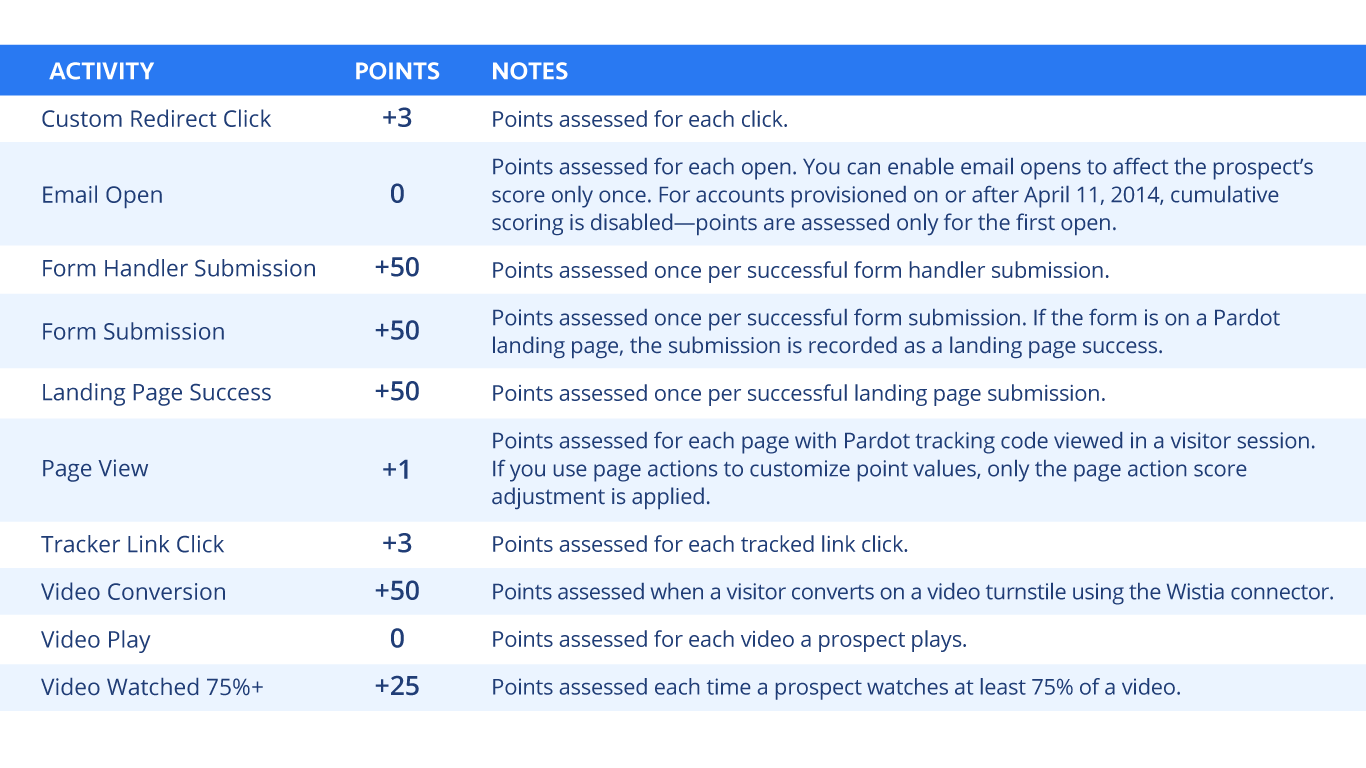Connect with a Consultant
Fill out your information with the form provided and one of our team members will reach out to you shortly.
Pardot lead scoring and grading allows you to correlate prospect actions with their fit and interest in your brand. Pardot monitors visitors on your site and keeps a running tally of every visitor interaction, adjusting a lead’s score and grade based on those interactions.
Depending on a prospect’s score or grade, we can show them relevant dynamic content, enroll them in suitable email programs, and assign them to our sales team at the appropriate time.
So, what is the difference between Pardot scoring and grading?
The main point of scoring and grading systems is to automatically qualify prospects based on their interactions with your brand. For instance, we use Pardot automation rules (which we’ll discuss in a later chapter) to convert prospects to MQL status once they reach a certain score, then automatically assign them to a salesperson in our Salesforce CRM.

Out of the box, Pardot gives numerous options for adding to or subtracting from a prospect’s score, such as page views, landing page successes, and email clicks. Each of these has a default point value, which can be modified to fit your particular needs.

If your organization has multiple products or business units, you can use scoring categories to assign scores differently for different products. You can view all scoring categories applicable to each prospect, in order to see all the products a specific prospect is interested in. You can then set up automation rules to assign those qualified leads to different teams once they pass your specified scoring threshold.
For further information, check out our B2B Guide to Pardot Lead Scoring. It breaks down the strategy behind configuring a lead rating system specific to your business needs.
Pardot’s options for grading aren’t quite as robust as the ones for scoring. Grading uses a simple system that increases a prospect’s grade by one-third, one-half, or one whole letter grade depending on the criteria you define.
Should you have multiple products or business units, grading doesn’t use categories like scoring does. You can create multiple grading profiles, but they must be assigned on a user-by-user basis through completion actions or automation rules. Additionally, changes to a prospect’s grade must be made through some form of automation you’ve configured or manually.

It’s important to standardize your lead scoring to prevent confusion and ensure that the goals for your sales and marketing teams are aligned. Your marketing and sales teams should collaborate to decide what score and/or grade should be considered a marketing-qualified lead, or simply a qualified lead record, in the platform.
Converting a prospect to an MQL can be based on measuring:
Pardot lead scoring and grading is an integral part of the platform and can be used for other functions besides just qualifying leads for sales. Scoring and grading are effective for segmenting your more developed contacts into lists and targeting them with relevant emails and dynamic content.
In the next section, we’ll go over how to start building out those lists.

Fill out your information with the form provided and one of our team members will reach out to you shortly.
6800 Burleson Road
Building 310, Suite 265
Austin, TX 78744
©EBQ 2023 All rights reserved.
Tell us about yourself and we’ll get in touch shortly.
